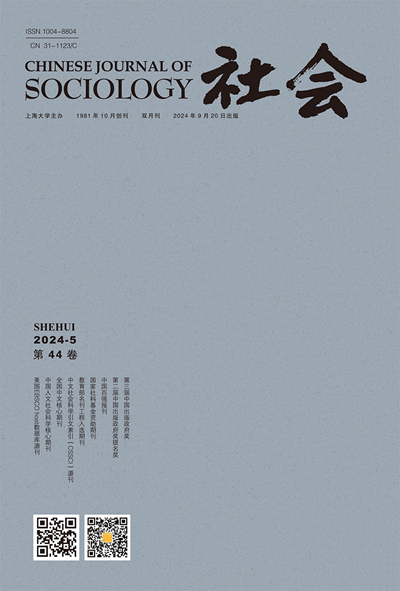明清时期水田彝族的民族化进程与形成——以四川省冕宁县白鹿营彝族为例
IF 1.8
4区 社会学
Q2 SOCIOLOGY
引用次数: 0
摘要
本研究探讨了少数民族如何被帝国同化并置于中央政府的管理之下,以及在这一国有化过程中他们的种族如何变化的问题。本文以四川省绵宁县白鹿营彝族为研究对象。白鹿营彝族的祖先在明朝万历以前居住在大凉山。明朝初年,政府在大凉山西侧的河谷上设立了宁凡驻军。到万历晚期,驻防部队不断受到当地原住民的攻击。为了平息抵抗,朝廷征募彝族士兵守卫守备。此后,在白鹿营河流域出现了新的彝族聚居地,彝族的生计在此过程中由放牧、渔业向农业转变。清初,白鹿营彝族进一步融入帝制,在帝制管理机构中加入了土司。然而,直到乾隆统治的后期,彝族在部落定居、权力结构和文化完整性方面保持了相对的自治。后来,随着汉族新移民的到来、保甲制度的引入和汉族文化教育的推广,白鹿营彝族逐渐失去了独立性,开始被同化为民族认同,形成了水田彝族。水田彝的例子表明,山区少数民族部落的生存策略并不一定遵循詹姆斯·c·斯科特所说的“避免成为帝国的一部分”的模式,这些民族与帝国的融合也并不总是缓慢和被动的。相反,接受帝国统治是一种生存策略,有助于创造新的民族群体,同时也巩固了明清帝国的边界。本文章由计算机程序翻译,如有差异,请以英文原文为准。
The nationalization process and formation of Shuitian Yi ethnicity during Ming and Qing: A case study of the Yi ethnic group in Bailu Ying, Mianning County, Sichuan
This study explores the question of how ethnic groups were assimilated by the Imperial State to be placed under the administration of the central government and how their ethnicity changed during this process of nationalization. This paper studies the case of the Yi ethnic group in Bailu Ying of Mianning county, Sichuan Province in China. The ancestors of Yi people in Bailu Ying lived on Mount Daliang before the Wanli reign of the Ming Dynasty. In the early period of the Ming Dynasty, the government had set up Ningfan Garrison on the river valley on the west side of Mount Daliang. By the late Wanli Period, the garrison was consistently being attacked by the indigenous people in the area. In order to quell the resistance, the Imperial Court recruited Yi people as soldiers to guard the garrison. Afterwards, a new settlement of the Yi tribe in the Bailu Ying River valley emerged, and in the process the Yi people’s livelihood was transformed from herding and fishing to agriculture. In the early Qing, the Yi people in Bailu Ying were further integrated into the Imperial system with the inclusion of chieftains in the imperial governing body. However, up until the later years of the Qianlong reign, the Yi maintained relative autonomy in terms of its tribal settlement, power structure and cultural integrity. Later, with the arrival of new Han migrants, the introduction of the Baojia system, and the promotion of Han culture and education, the Yi group in Bailu Ying gradually lost its independence and began to be assimilated into the national identity, leading to the formation of Shuitian (rice field) Yi ethnicity. The case of the Shuitian Yi shows that the survival strategy of tribal minorities from the mountains did not necessarily follow the pattern of ‘avoiding becoming part of empires’, as suggested by James C. Scott, nor were these ethnic people always slow and passive in integrating with empires. On the contrary, the acceptance of the imperial rule was a survival strategy that helped to creating new ethnic groups while also consolidating frontiers for the Ming and Qing Empires.
求助全文
通过发布文献求助,成功后即可免费获取论文全文。
去求助
来源期刊

社会
Social Sciences-Social Sciences (all)
CiteScore
1.70
自引率
0.00%
发文量
6799
期刊介绍:
The Chinese Journal of Sociology is a peer reviewed, international journal with the following standards: 1. The purpose of the Journal is to publish (in the English language) articles, reviews and scholarly comment which have been judged worthy of publication by appropriate specialists and accepted by the University on studies relating to sociology. 2. The Journal will be international in the sense that it will seek, wherever possible, to publish material from authors with an international reputation and articles that are of interest to an international audience. 3. In pursuit of the above the journal shall: (i) draw on and include high quality work from the international community . The Journal shall include work representing the major areas of interest in sociology. (ii) avoid bias in favour of the interests of particular schools or directions of research or particular political or narrow disciplinary objectives to the exclusion of others; (iii) ensure that articles are written in a terminology and style which makes them intelligible, not merely within the context of a particular discipline or abstract mode, but across the domain of relevant disciplines.
 求助内容:
求助内容: 应助结果提醒方式:
应助结果提醒方式:


